100 Climate Actions from Cities in Asia and the Pacific
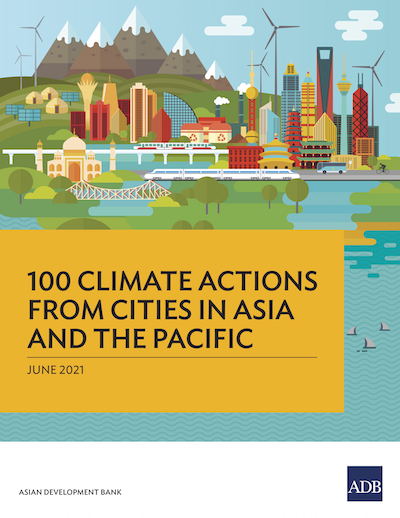

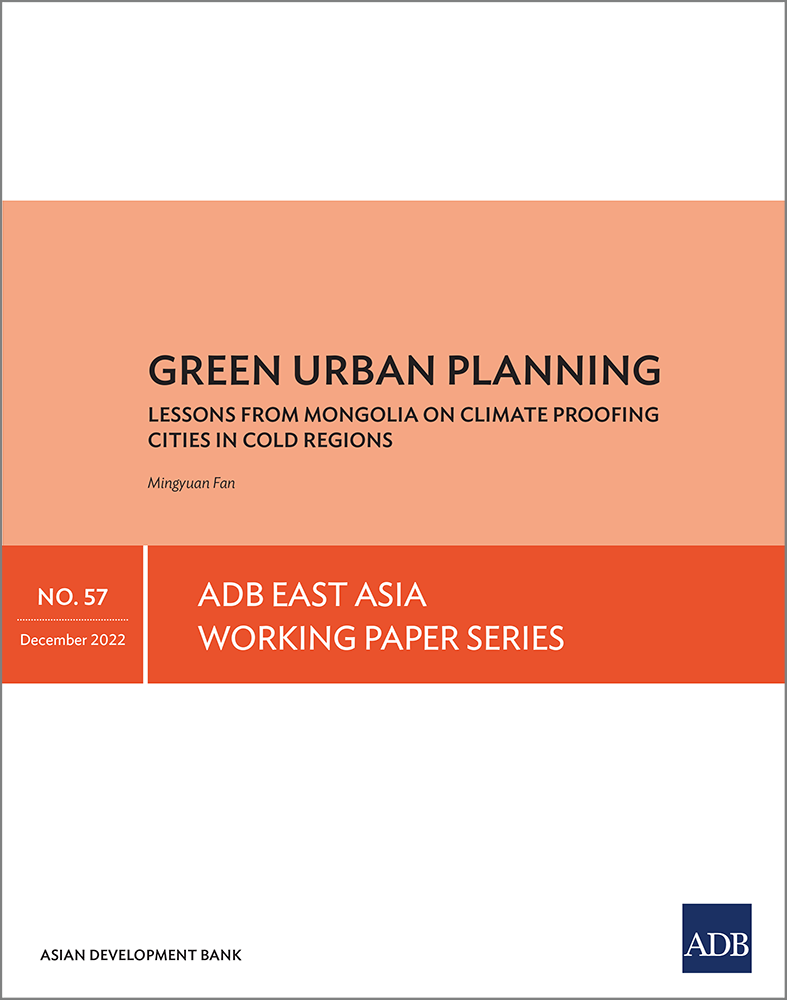

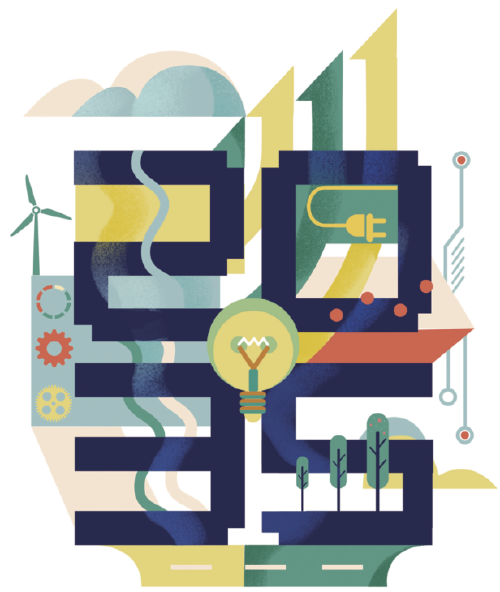
At the 27th United Nations Climate Change Conference (COP 27) in Sharm el-Sheikh, Egypt, from Nov 7-18, the global community came together to discuss how to accelerate climate action. The findings are clear — global climate commitments and needed action are set to fail in keeping global warming below the 1.5 degrees Celsius tipping point.
The impacts of climate change are becoming increasingly severe in Asia and the Pacific, and they demand our urgent attention and intervention.
The drought in Sichuan province this summer was a stark reminder of this reality. Home to 94 million people, Sichuan normally generates 80-85 percent of its electricity demand through hydropower. This constitutes around 25 percent of the PRC’s overall hydropower generation; equivalent to that of France, Turkiye, and Norway combined.
When reservoir levels fell due to the extreme drought in August, hydropower could no longer generate sufficient electricity. The surrounding processor chip factories — dependent on hydropower — were forced to close, dealing a blow to the livelihoods of workers and their families. The incident also showed how climate change impacts are interlinked, as chips from Sichuan are critical components globally for smartphones, car manufacturing, and renewable energy technology.
The need to adapt to the impacts of climate change has never been more urgent. This requires unprecedented collaboration to drive innovative solutions, both scientific and financial, that can be shared across communities. By working together, we can leverage resources to prevent catastrophic damage to human health, our economies, and social well-being by reducing the severity of climate-induced disasters triggered by natural hazards, and by mitigating the damage done by slower onset impacts such as sea level rise and increased desertification.
The PRC’s new National Climate Change Adaptation Strategy 2035 is an insightful and integrated endeavor to steer the country toward climate-resilient development. The strategy was prepared by the Ministry of Ecology and Environment, but released jointly by 17 national ministries, reflecting the urgency and deep understanding of climate change as a cross-cutting global phenomena. The Asian Development Bank and the Global Center on Adaptation are proud to have provided support to develop this new strategy.
The strategy emphasizes preparedness and prevention, and comprehensively addresses vulnerabilities such as extreme weather events. It also considers emerging threats such as climate-induced migration of vector-borne diseases. The strategy focuses on the need for sound governance, and on the social and economic impacts of climate change including on livelihoods, health, education and urban planning.
Crucially, the strategy pushes the boundaries of adaptation by suggesting approaches such as assisted relocation for residents who live in vulnerable areas considered “high-risk”. Asia and the Pacific may see hundreds of millions of climate refugees by 2050 due to sea-level rise, extreme weather events, and water insecurity.
According to a study, eight Asian nations — the PRC, Bangladesh, India, Vietnam, Indonesia, Thailand, the Philippines, and Japan — account for 70 percent of people living on “at-risk land”.
The PRC recognizes that the global climate challenge demands integrated solutions which address adaptation and mitigation simultaneously. For example, climate-smart agriculture promotes more resilient and sustainable production and value chains while reducing greenhouse gas emissions. Afforestation and wetlands amelioration and conservation offer resiliency benefits while sequestering carbon. This integrated approach is extremely important to leverage impact amid scarce resources and an increasing need for climate action.
The Asian Development Bank’s Yellow River Ecological Corridor (YREC), launched in 2021, supports the regional climate adaptation priorities of the PRC’s strategy. It is a comprehensive approach, designed to protect and restore the Yellow River basin’s diverse and fragile ecosystems, address climate change mitigation and adaptation, and enable more equitable and sustainable green rural-urban economic development.
The YREC will partner with the Chinese government to develop a basin climate risk assessment report, establish a climate change management framework, and prepare an adaptation plan. The strategy provides sound guidance for this work and serves as an excellent platform for climate engagement and action at the sub-regional level and among development partners.
It is also a meaningful tool to promote South-South cooperation, reflecting the global nature of the climate crisis. the PRC already has 38 climate change cooperation agreements with other countries. It has helped to develop community-led early warning systems for floods and provided micro-satellites and meteorological mobile stations to Ethiopia, Bolivia, and Uruguay, while supporting climate-related capacity development in over 100 countries.
As we move to implement COP 27 agreements, the 1.5 degree aspiration remains. Time is running out for action to mitigate climate change, and the economies of Asia and the Pacific are uniquely vulnerable.
The PRC’s National Climate Change Adaptation Strategy 2035 provides a tangible national blueprint that can help guide other countries looking to prepare climate change action plans. These plans require large amounts of financing, yet climate action must also be seen as an opportunity, not only as a cost. Smart climate investments create new business ventures, help communities become more resilient and sustainable, and integrate climate awareness and action across the economy and wider society.
We need to work together on climate action to provide finance and sound governance, foster knowledge and planning, seek innovation, and share capacity development to secure a sustainable and resilient Asia and the Pacific.

Country Director, PRC Resident Mission, ADB

Director, Environment, Natural Resources and Agriculture Division, East Asia Department, ADB
This Op-Ed is reproduced from China Daily.
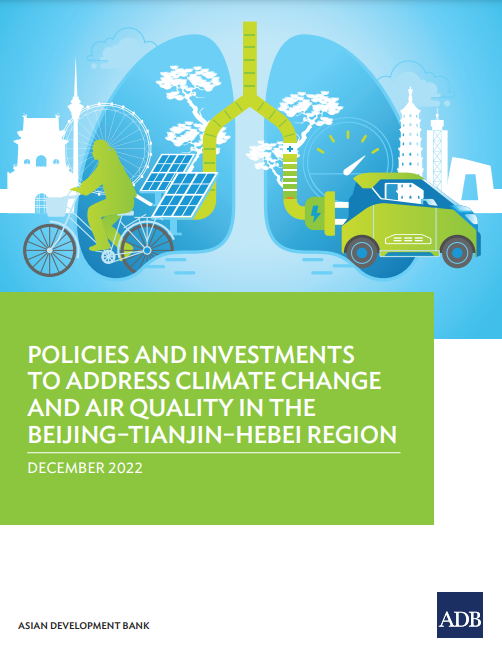
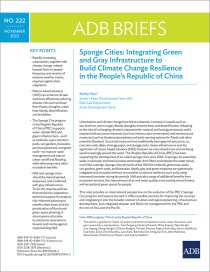
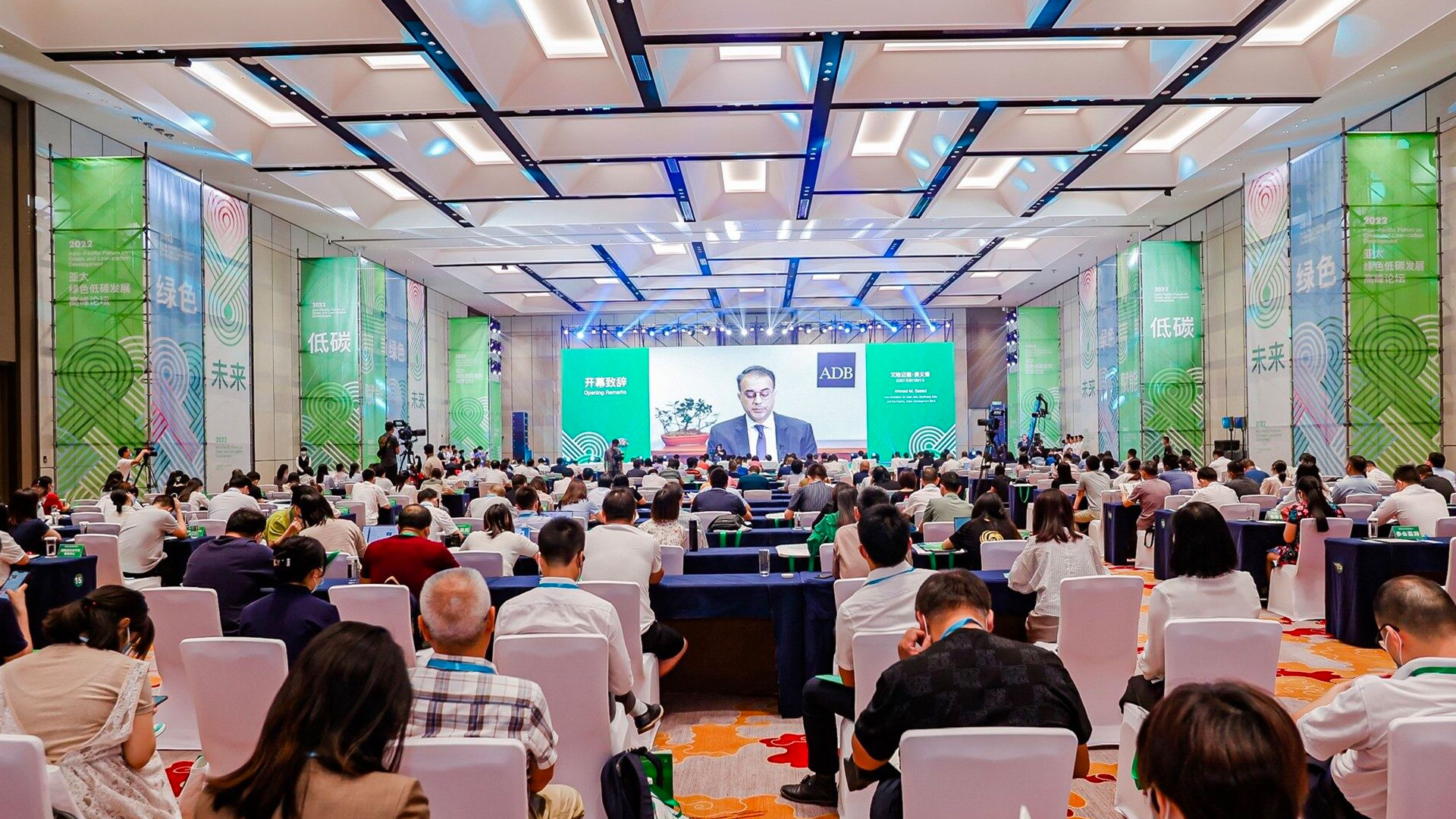
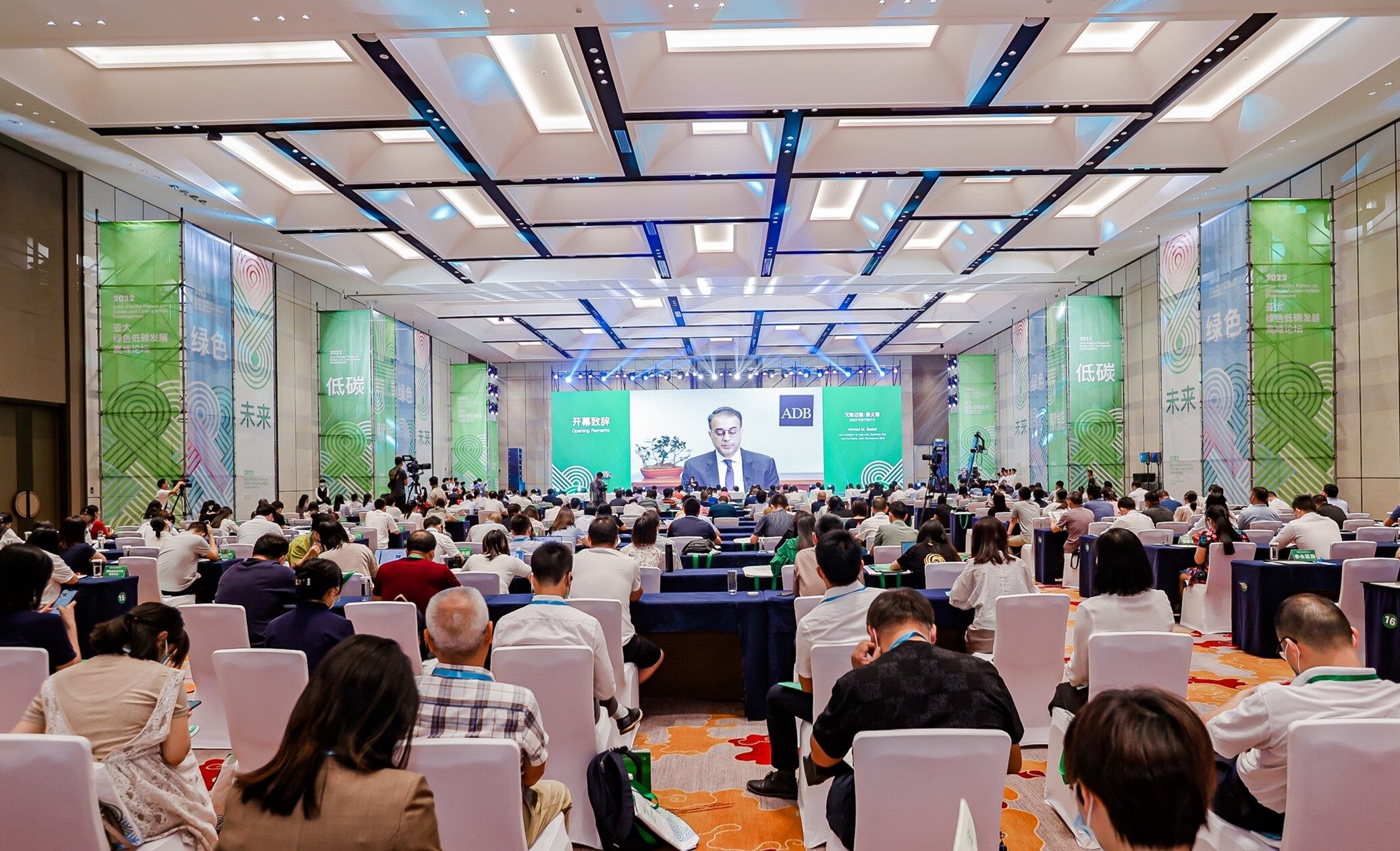
Addressing the ongoing climate crisis is the only way out of the economic recession we are heading into. Technological and financial cooperation in Asia Pacific should lead the way.
Toward the end of World War II, three strange bedfellows (Churchill, Roosevelt, and Stalin) set the foundations of the United Nations in Yalta. In view of what was at stake in reference to the Yalta Conference, Winston Churchill famously said “Never let a good crisis go to waste”.
A triple energy, food, and climate crises are looming
Fast forward almost 80 years, we find ourselves living through various combined crises at once, and we should use them to increase our commitment to solve them without backing out. The Covid-19 pandemic created havoc across the world and required unprecedent containment measures. But restarting economies after so many months created a painful bottleneck effect that squeezed global supply chains. And if that was not enough, the Russian invasion of Ukraine created the perfect storm in energy markets, which rippled across all other economic sectors. The result, an energy crisis that is causing a global inflation we have not seen in a generation. A food crisis that will bring millions to hunger. And let us not forget that the climate change crisis never left, and that the world keeps getting warmer and climate-triggered disasters nastier. The danger of economic recession is very real.
Not only policy, finance or technology, but all should be deployed
With this bleak background, the 2022 Asia Pacific Green and Low-Carbon Development Forum in Hunan, the People’s Republic of China (PRC) brought together over 500 participants to discuss decarbonization in Asia Pacific region, with millions joining online the various sessions. It was discussed that governments should be serious about their climate objectives. Not just to sign some document at the different conference of parties (COPs), but to action on them. The PRC has established the “1+N policy framework”, with “1” referring to the long-term objective of carbon neutrality in 2060, and “N” the various solutions to achieve carbon peaking in 2030. And the country has already included these guiding objectives in its latest Five-Year Plan at all levels of government, which are already being executed.
The forum discussed the importance of introducing new zero-carbon technologies in the energy sector, but it was also remarked that technology innovation alone is not enough. The willingness to adopt innovation is limited, as people prefer mature technologies rather than jumping at scale into something promising but unproven. Policies, carbon finance, and soft skills are needed to structurally transform the economy.
Energy transition and carbon markets are a necessary first step
There were focused sessions on the energy transition and how to optimize the use and transformation of energy resources. Digitalization was also an important topic of discussion, and the potential of artificial intelligence, cloud computing, and big data to increase resource consumption efficiency and decarbonization of electricity generation and supply chains.
It was mentioned that accurate carbon emission monitoring systems and a functional carbon market, like the recently launched national Emission Trading Scheme (ETS) in the PRC are essential to achieve a low carbon economy. The ETS, once fully developed, will be essentially a multi-sectoral tradable performance standard, for being both a policy tool and a financing mechanism. It provides the carrot and stick to steer development of high-emitting sectors, like power generation.
Cities and industries transformation could lead the way
More than half of the four billion residents in Asia-Pacific live in urban areas and about a billion are likely to join them by 2050. Asian cities, with an ever growing population, need to decarbonize across all sectors, from buildings and construction materials, to urban transport or water supply. Green buildings were discussed, and how to achieve zero-energy buildings by reduced energy consumption and solar generation. And as the PRC is the factory of the world, the development of Industry 4.0 is being put forward by building and retrofitting industrial zones to become carbon neutral. Transforming industrial parks into smart eco-parks that aim at zero environmental impact in their processes and operations, by eliminating air and water pollution through appropriate treatment and waste disposal, as well as significantly reducing greenhouse gas emissions.
Delegates pointed out that billions of dollars in funding are needed to meet the PRC’s dual carbon objectives, and climate finance are crucial in this structural low carbon transformation. Private sector participants remarked that MDBs could be agents for change and enable private sector involvement in ambitious decarbonization programs. Like with ADB’s Energy Transition Mechanism, MDBs bring credibility to projects, encouraging institutional investors to get involved.
A common effort is needed to fight these crises
Each year, the forum brings together many different stakeholders that need to cooperate, share lessons and knowledge, and learn from each other’s experience. Government officials, academia, business people, investors and financiers, all have to join forces to help the PRC and Asia-Pacific reduce its dependence on fossil fuels, reduce carbon emissions, improve food security and climate resilience, and work for a clean and sustainable world for future generations to thrive. If we do not take this task seriously, more (and worse) crises will keep hitting us, driving more people into poverty and reversing the impressive economic development of the last three decades. Perhaps we should follow Churchill’s advice and do not let these crises go to waste. It is about time to act.

Senior Energy Specialist, Asian Development Bank
Related event: 2022 Asia Pacific Green and Low-Carbon Development Forum


The National Climate Change Adaptation Strategy 2035 emphasizes nature-based solutions, a region-specific approach, and climate-resilient investments.
Overview
Along with greater natural hazard risks and changes to terrestrial and aquatic ecosystems, climate-related economic losses have increased significantly over the last decades. Between 1990 and 2019, damage to property, crops, and livestock from disasters triggered by natural hazards in the Asia and Pacific region amounted to almost $1.5 trillion. In 2020 alone, Asia’s overall losses related to natural hazards amounted to $67 billion, of which only $3 billion, or less than 5%, were insured. Global climate change and frequent extreme weather events seriously threaten the development and even survival of humanity, leading to a global consensus that active measures must be undertaken.
In response to the worsening climate crisis, the People’s Republic of China (PRC) has been developing its National Strategy for Climate Change Adaptation 2035 (NCAS). The strategy puts forward an ecosystem-based approach to cover both natural ecosystems—including water resources, terrestrial ecosystems, and marine and coastal zones; and social and economic systems—including agriculture and food security, public health, infrastructure, urban and industrial development, of sensitive secondary and tertiary industries. It encourages the mainstreaming of climate adaptation with ambitious targets for all sectors and regions by 2035. It also prioritizes climate change monitoring, early warning system, risk management, and investments in a climate-resilient future.
To ensure implementation is tailored to a variety of contexts, the national adaptation strategy considers geographic characteristics and spatial planning. As such, the strategy’s implementation focuses on economic and ecological zones in the PRC, including Beijing-Tianjin-Heibei, Guangdong-Hong Kong-Macao Greater Bay Area, the Yangtze River Delta, the Yangtze River Economic Belt, and the Yellow River Basin.
This article summarizes some of the key discussion points shared at the 22 June 2022 Final Review Workshop of the Climate Change Fund (CCF) Project on Developing National Climate Change Adaptation Strategy 2035.
Climate Adaptation of Natural Ecosystems
Water sits at the center of the PRC’s adaptation efforts in many ways. Like many other countries, the PRC is exposed to droughts and floods of greater severity exacerbated by climate change impacts. Severe floods during the 2020 summer monsoon in the Yangtze River Basin were among the costliest disasters. Losses amounted to approximately $17 billion, of which only around 2% were insured. Water scarcity is also a concern in many provinces, particularly in the upper Yellow River Basin, which is affected by frequent droughts.
The NCAS emphasizes the importance of resilient water management systems and increasing investments to adapt to periods of both too much and too little water. This means integrating grey and green infrastructure, such as building reservoirs or sponge cities, as well as educating the public about saving water during periods of drought and raising general awareness of water-related ecosystem services. This also involves strengthening biodiversity or urban cooling during heatwaves, and developing innovative, community-led flash flood early warning systems.
Becoming an “ecological civilization” implies working in harmony with nature to adapt to climate change. Rural areas, which are often the most affected, are the most dependent on ecosystem services. It has long been recognized that restoring ecosystems promotes synergies between ecological conservation, sustainable livelihoods, and adaptation. To this end, the strategy highlights climate-resilient agriculture as key to food security. From a natural ecosystem perspective, a diversification of crops that can better absorb excessively dry or wet periods and smart farming practices, such as a less proliferate and more effective use of pesticides, will contribute to climate adaptation in rural areas while diversifying income streams.
Protecting marine biodiversity also increases resilience to climate change impacts, such as rising temperature, and protects livelihoods that depend on fisheries or ecotourism. This creates the basis for a blue economy and opportunities for future generations.
Climate Adaptation of Economic and Social Systems
There is a panoply of measures that governments and societies must take to ensure economic and social systems can thrive in a changing climate. Fundamentally, the NCAS recognizes the importance of strengthening green industrial development for adaptation purposes. In practice, this means steering vulnerable industries in the right direction through policies and regulations. This also entails modernizing and climate-proofing public infrastructure with different approaches to urban planning.
The strategy highlights the importance of effective climate risk assessment and monitoring in ensuring continued economic activity and investment amid adaptation efforts. Risk analysis shows how natural hazards can be avoided or the necessary measures to mitigate risks and improve resilience.
Digitalization will play a critical role in mainstreaming climate adaptation across all sectors, especially in risk assessment and early warning systems. By 2035, the national strategy envisions a climate risk management digital platform that provides weather and climate forecasts with seamless full coverage and intelligent and digital functions to assess specific risks. This platform will require close coordination among 17 ministries for effective planning, allocation of resources, and joint emergency response.
Region-Specific Approach to Adaptation
The adaptation strategy of the PRC is based on geographic characteristics and regional spatial plans to ensure recommendations are relevant and impactful for key zones. The Yellow River and the Yangtze River basins are two of the key geographical units prioritized for enhanced basin-wide climate adaptation.
Figure 1: Basic Frame of Regional Adaptation
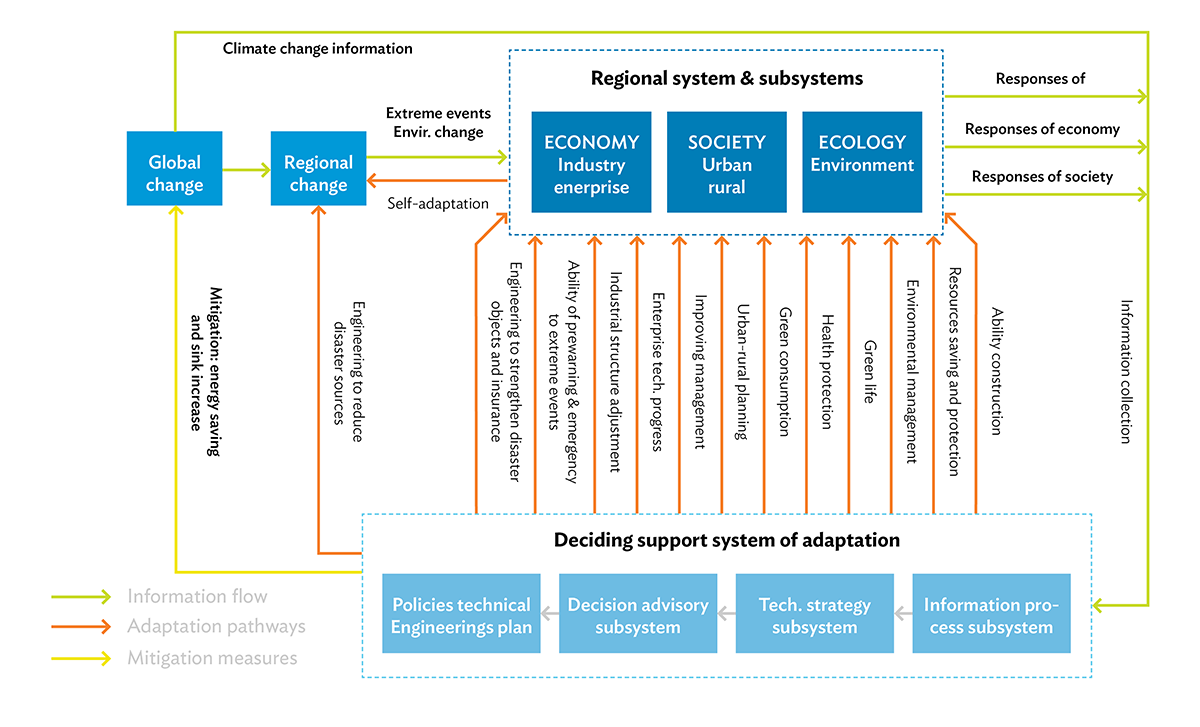
The strategy emphasizes the importance of an adaptive economic and social basin system. For example, creating ecological corridors can help maintain and restore ecological connectivity and ecosystem integrity while promoting high-quality green development in the Yellow River Basin— the second largest river basin of the PRC.
A region-specific approach builds on stakeholder engagement and accountability. Local knowledge is important in formulating local adaptation plans. Consulting stakeholders strengthens community-led initiatives and recognizes local expertise and knowledge in tailoring adaptation efforts to specific locations. Establishing resilience at the community level first enables local communities to understand the relationship between the ecosystem and society.
Recommendations
While more countries around the world embrace climate action and green development, policy and regulatory gaps remain, and private sector investments continue to be lacking. The economic slowdown triggered by COVID-19 and the reallocation of government spending toward emergency response initially contributed to widening these gaps. However, governments have since strengthened their climate commitments and dedicated more resources to green development and improving climate resilience, realizing that safeguarding the environment also translates to safeguarding businesses and the economy. Yet, more is needed. The PRC alone requires about ¥1.6 trillion RMB (about $22 billion) annually to achieve its national adaptation targets.
Figure 2: Climate Adaptation Delivers High Economic Returns
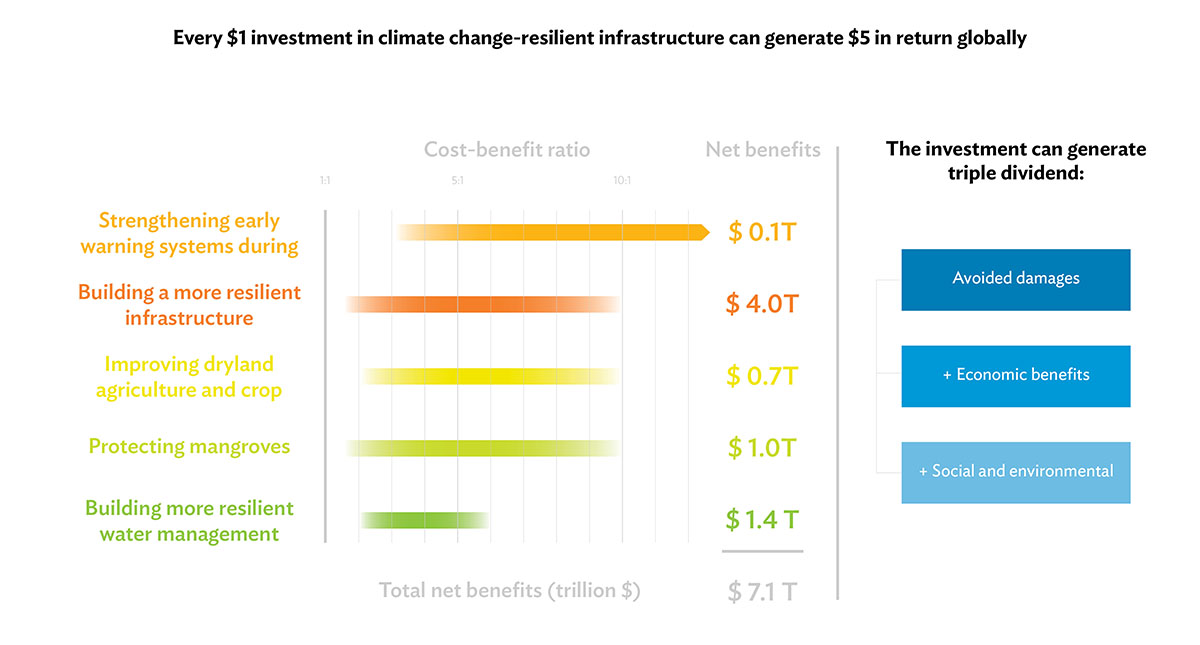
Scaling up nature-based solutions can help protect, sustainably manage, and restore natural and modified ecosystems to address societal challenges effectively and adaptively, benefitting human and nature.
Adaptation efforts should find worthy allies across other branches of government. The judiciary can act as a key player in implementing adaptation legal frameworks, holding government and private entities liable for environmental offences, and using laws and regulations to protect, promote, and instigate adaptation initiatives.
To activate plans for climate action, financial resources must be pooled and options, such as working with financial institutions (domestic, international, and private), must be considered. Cooperative financing models can be used to bring adaptation forward, especially at the provincial and sub provincial levels.
NOTE: The official version of the “National Climate Change Adaptation Strategy 2035” is in Chinese. Here is the link to the English translation if you wish to read or learn more about this strategy.

Director, Environment, Natural Resources and Agriculture Division, East Asia Department, ADB

Environment Specialist, Environment, Natural Resources & Agriculture Division, East Asia Department, ADB

Water Resources Specialist, East Asia Department, Asian Development Bank
This blog is reproduced from Development Asia.


Transition finance, which provides financing to high carbon-emitting industries, should be part of a broad range of innovative financing options to address climate change.
Addressing climate change and taking action on its impacts and effects remain an urgent concern worldwide. There has been strong consensus that the financial sector should go beyond supporting purely green activities to effectively transform the existing carbon emitters. Realization of transition finance is crucial in the efforts to combat climate change.
Transition finance is a concept where financial services are provided to high carbon-emitting industries – such as coal-fired power generation, steel, cement, chemical, paper making, aviation and construction – to fund the transition to decarbonization.
The transition finance concept emerged from the understanding that effective decarbonization of the entire global economy will require much more than green finance. Green finance and sustainable finance – as they are currently defined – have focused largely on supporting activities that involve minimum pollution and carbon emissions. However, a much larger amount of financing is required in carbon-intensive sectors that need to decarbonize, and to eventually achieve net zero emissions.
The key challenge to transition finance is the lack of private sector financing for decarbonization activities due to various barriers, including: the lack of a clear definition of transition activities, which may lead to investor fears that their participation may be seen as “green washing,” or claiming to invest in an eco-friendly business that isn’t; lack of disclosure; which may encourage false transition activities; the lack of financial instruments that provide incentives better performance of emission reductions; and the lack of demonstration projects that show successful decarbonization is achievable in most of the high-emitting sectors.
To address these issues, and to effectively mobilize private investment in transition activities, a transition finance framework needs to be established. To make transition finance feasible, this policy framework should consider the following elements: identification of transition activities; disclosure and reporting; financing tools; incentives, and mitigating social impact.
First, there needs to be a credible approach to identifying and labeling transition activities. Any activity supporting a credible transition towards net-zero greenhouse gas emissions should be considered as transitional. One way to identify transition activities is to develop a “transition finance taxonomy” in which specific transition activities are presented with descriptions of technical pathways and emission reduction targets. This is being done in the European Union and some pilot regions in the People’s Republic of China, focusing on industries such as steel, cement, petrochemical, and agriculture industry.
The transition finance concept emerged from the understanding that effective decarbonization of the entire global economy will require much more than green finance.
The identification approaches should be flexible and dynamic, and serve to reduce the cost of market participants and mitigate risks.
Second, good reporting practices are also necessary to help prevent transition activities that convey a false impression or support an unsubstantiated claim on sustainability, where firms may claim to invest in emission reduction activities but are in fact involved in projects that lock-in high carbon emissions– a behavior often termed as greenwashing.
Third, a toolbox of financial instruments should be developed to support transition activities. This can include debt instruments such as transition and sustainability-linked loans and bonds. For example, if the fundraiser of a project can deliver stronger-than-expected emission reduction performance, investors will charge a lower interest rate. The toolbox can also include equity-related instruments, such as the transition funds launched in Europe. Additionally, existing instruments such as private equity, venture capital funds, buyout funds, and mezzanine financing facilities can also be adapted to facilitate transition activities. De-risking facilities should also be developed to help lower the perceived risks of transition.
Fourth, fiscal subsidies, tax incentives, and green finance-related incentives such as central bank financing facilities should be considered to support transition finance and enhance the bankability of transition projects.
Fifth, socioeconomic costs, such as unemployment, energy shortages, and inflation, need to be accounted for and disclosed during the design of transition activities. To mitigate these costs, assessing employment implications thoroughly and including mitigation measures in transition plans, such as employee training and reskilling programs, are crucial to realize “just transition.” Efforts are also encouraged to integrate such social elements (e.g., employment performance) in the key performance indicator design of sustainability-linked products.
Asia and the Pacific should take the following steps to promote transition finance:
First, regulators and financial institutions in the region should clarify the eligibility criteria for transition activities, which could be in the form of transition taxonomy, to lower the cost for banks and investors. This will guide companies to adopt the best technical pathways for transition.
Second, demonstration projects should be developed to highlight the feasibility of transition finance, which is new to most in the financial sector. Concrete examples are needed to counter the perception of high costs and risks. These could include transition project in coal-fired power generation, steel, cement, and petrochemicals.
Last, Asia and the Pacific should consider launching its own transition funds. Transition funds can be launched by either governments or international organizations, such as multilateral development banks and other international financial institutions, or through international collaboration among different countries to reduce the funding costs and risks for these transactions, and help attract private sector investment.
A broad range of activities, with innovative financing options, are needed to address climate change. Transition finance is an important part of that equation.
This blog post is based on information shared at East Asia Forum 2022.

President, Institute of Finance and Sustainability (based in Beijing)

Principal Economist, East Asia Department, ADB
This blog is reproduced from Asian Development Blog.
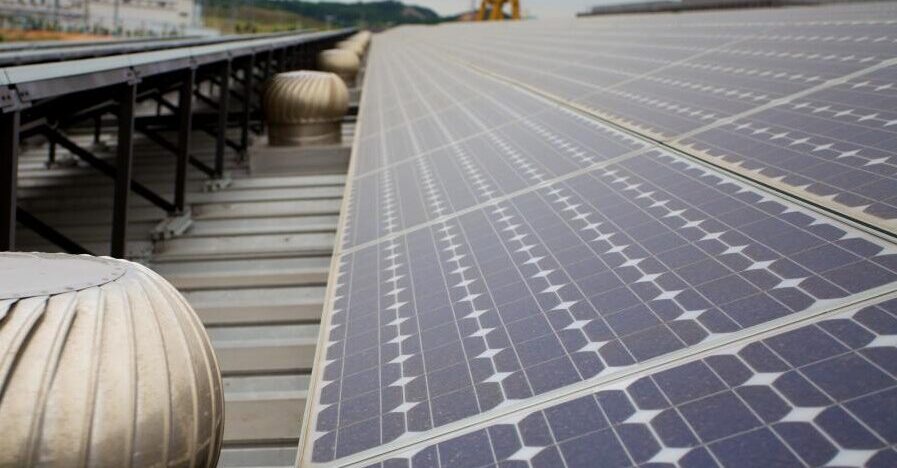
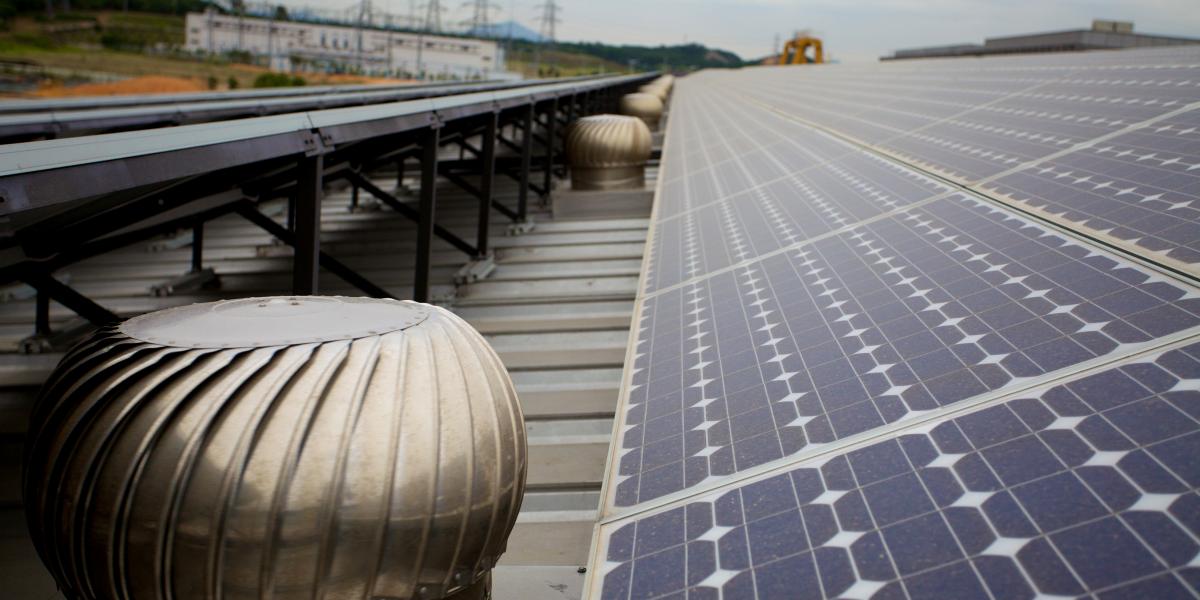
In the People’s Republic of China, advanced technology and innovative financing schemes make the city-scale deployment of green cooling solutions possible.
Overview
As a substitute for ozone-depleting substances, hydrofluorocarbons (HFCs) are widely used as refrigerants for refrigeration and refrigeration systems. Although they are believed to have negligible impact on the ozone layer, HFCs have global warming potential several thousand times that of carbon dioxide (CO2) and are the fastest growing greenhouse gases (GHGs), increasing 10% every year.
Refrigeration and air conditioning systems also consume enormous amounts of fossil fuel-powered electricity.
A warming planet and rising incomes are increasing the demand for cooling exponentially. However, many cities in the world lack advanced technical solutions and effective financing mechanisms to attract investment in highly efficient and climate-friendly refrigeration and/or cooling systems and services.
In the People’s Republic of China (PRC), a project supported by the Asian Development Bank (ADB) helped the city of Ningbo in Zhejiang province develop climate-friendly solutions and innovative business models and financing mechanisms to reduce GHG emissions and improve energy efficiency in the cooling sector. Solutions include an internet-based platform to enable the sharing of underutilized refrigeration and/or cooling resources.
Lessons and recommendations from the project can help other cities reduce their carbon footprint and build a climate-friendly, energy-efficient, and smart cooling sector.
This case study is adapted from the project’s completion report and other documents.
Project information
Project snapshot
Context
The PRC is the world’s largest user of HFCs, and it recognizes the urgent need to reduce HFCs as part of climate mitigation measures. In 2016, the PRC adopted the Kigali Amendment to the Montreal Protocol, committing to reach peak consumption and production of HFCs by 2024 and an 80% reduction by 2045.
As one of the most important energy production and manufacturing bases in the PRC, Ningbo presents a unique opportunity to showcase advanced solutions and innovative financing mechanisms for city-scale sustainable cooling.
Ningbo is a dynamic city of 7.6 million people with a developed industrial economy and high energy demand. It is located in the Yangtze River Delta on the east coast and has the largest shipping port in the country.
Challenges
Although the PRC has made many efforts to improve energy efficiency in the industrial, commercial, and residential sectors, the potential for energy savings and GHGs reductions in the refrigeration and/or cooling sector is far from being tapped.
Insufficient information on advanced cooling-related technologies and lack of accessible and affordable financing have also made customers prioritize less-efficient solutions in the refrigeration/cooling systems.
A 2018 survey by the Ningbo Development and Reform Commission on the refrigeration and/or cooling systems in cold storage and/or refrigerated warehouses, food services, supermarkets, and hotels revealed that many refrigeration systems installed 20 to 30 years ago are still in operation. The energy efficiency of these legacy systems can be greatly improved.
The traditional way of doing small and isolated energy-saving projects, however, makes it difficult to attract investment in more efficient systems and services.
Implementing a large-scale cooling initiative at the city level could create opportunities for energy efficiency improvements in all sectors related to cooling—from cold storage and refrigeration warehouses to food services, supermarkets, industrial production, and logistics transportation, and air conditioning in commercial, public, and residential buildings.
Solutions
The project in Ningbo assessed national policies on energy efficiency improvement and reduction of GHG emissions in the cooling sector, identified advanced refrigeration and/or cooling technologies and applications (e.g., using waste energy for cooling), developed viable business models and innovative financing mechanisms for the cooling initiative (i.e., sharing economy model, bulk procurement, “platform as a service” model ), and designed an “internet+ cooling” prototype for optimal resource utilization.
The project conducted customer surveys on cooling equipment, energy use, and the customers’ willingness to invest in energy efficiency and low-carbon measures. It created a database of viable retrofit projects to enable the city to aggregate these opportunities to achieve large-scale energy savings. It identified barriers in promoting green cooling, including hurdles to retrofitting inefficient cooling systems or adopting new technologies, which formed the basis for preparing policy recommendations. It studied the feasibility of internet-enabled platforms to help achieve city-scale green cooling deployment through digitalization.
The project prepared an internet+ cooling prototype implementation plan on how to design digital infrastructure, determine digital solutions, and establish new data-driven business models to support Ningbo in its transition to smart and climate-friendly cooling. It adopted the sharing economy concept for the cooling sector. For example, underutilized refrigerated spaces in cold storage and cold chain transportation equipment and vehicles may be shared by several facilities.
The internet+ concept and the sharing economy can provide several benefits, such as optimizing the utilization of resources, avoiding waste, saving energy, and reducing costs and emissions.
Results
The project helped Ningbo create an integrated implementation model that scales climate-friendly cooling through financing and market innovation. This approach enables cities to simultaneously seize green cooling opportunities in multiple sectors, including industry, commercial, and the public sector.
The Ningbo Development and Reform Commission has not only adopted the project’s climate-friendly and energy efficient cooling initiative but also prepared an investment proposal for ADB financing based on the findings of the project and submitted it to the National Development Reform Commission in October 2021. The PRC’s National Investment and Guaranty Corporation (I&G), the executive agency of the Air Quality Improvement in the Greater Beijing–Tianjin–Hebei Region—Green Financing Scale Up Project, may also finance some cooling retrofit subprojects in Ningbo subject to further due diligence.
Lessons and Recommendations
The project focused on the key factors that were preventing adoption of cleaner cooling technologies. It assessed major policy gaps affecting refrigeration and cooling-related energy efficiency, identified advanced cooling technologies and applications, developed viable business models and innovative financing mechanisms, and designed an internet+ cooling prototype to promote optimal resource utilization.
Key recommendations based on the studies made by the project are the following:
Asian Development Bank (ADB). Developing a Climate-Friendly Cooling Sector through Market and Financing Innovation in the People’s Republic of China.
ADB. 2022. Technical Assistance Completion Report: Developing a Climate-Friendly Cooling Sector through Market and Financing Innovation in the People’s Republic of China. Manila.
ADB. 2021. People’s Republic of China: Developing a Climate-Friendly Cooling Sector through Market and Financing Innovation. Consultant’s Report. Manila.
ADB. 2018. Technical Assistance to the People’s Republic of China for Developing a Climate-Friendly Cooling Sector through Market and Financing Innovation. Manila.
United Nations Environment Programme. 2016. The Kigali Amendment to the Montreal Protocol: Another Global Commitment to Stop Climate Change. Nairobi.

Senior Environment Specialist, East Asia Department, ADB
This blog is reproduced from Development Asia.
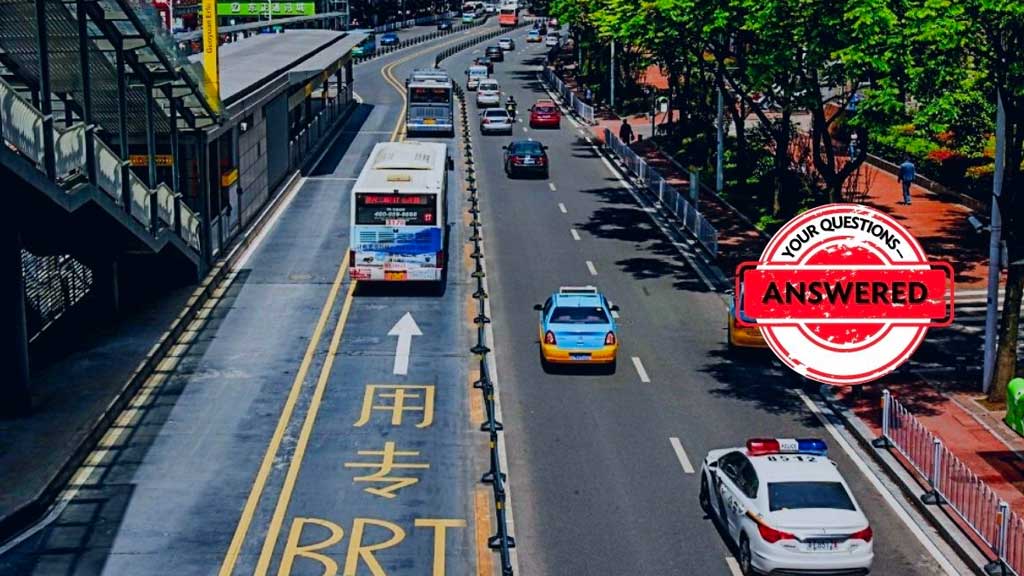

Jonathan Walters, an economist and senior advisor for the infrastructure consulting firm Castalia and Akiko Terada-Hagiwara, an ADB Principal Economist, answer questions on how to work through the issues towards decarbonization in Asia and the Pacific.
Countries around the world are working to produce energy with low levels of greenhouse gas emissions but they face formidable obstacles.
Decarbonization is the process of transitioning an economy to energy sources that produce low levels of greenhouse gas emissions, and reduce the impact of climate change.
It is important because, in addition to the well-being of the planet and its inhabitants, a country’s competitiveness often depends on making the transition to the use of low-carbon technology. This is because decarbonization is increasingly driven by economics, and not only by environmental concerns. Low-carbon technologies overall, with some exceptions such as nuclear fusion, wave power, and green hydrogen among others, have been getting cheaper relative to other technologies.
This has profound implications for a country’s economic strategy and policies, and the countries that adapt the best will likely outcompete the others in the global marketplace and create more jobs.
This stands in sharp contrast to an earlier period when economic competitiveness and mitigating climate change were often in opposition to each other, and trade-offs frequently had to be made between those two objectives. Nowadays, pursuing climate change mitigation and pursuing competitiveness often both lead in the same direction.
The transition to decarbonization is often slowed by institutional inertia, weak regulation, uncertainties in planning, risk-aversion, lack of up-to-date knowledge about the economics of different technologies, carbon-intensive technologies locked in by long-term contracts, and monopoly power providing protection from competitive market forces.
Decarbonization strategies need to factor in how technologies work together. While some of the technologies are disruptively cheap, others are not. For example, variable renewable energies such as wind and solar are now cheap, while energy storage technologies which can cover the whole period in which the wind is not blowing or the sun not shining are still on the way down their cost curves.
Electrochemical battery storage is now cheap enough for a few hours of storage, but not for the whole time that variable renewables are not generating electricity. For that, medium- to long-duration, storage technologies need to get cheaper. Examples of such technologies are green hydrogen, molten salts thermal storage, compressed air storage, pumped hydropower storage and other gravity-based storage.
Investment planning decisions therefore have to take into account the complexities and costs of the different technologies in use.
Countries can decarbonize more quickly by participating in international climate agreements, recognizing the differing responses of various sectors of the economy during the decarbonization process and by accessing low-cost financing.
International agreements about climate change, which require national commitments to decarbonization, can help. In some instances, it is the commitment to mutual international interest that can push forward the pursuit of national action in the face of what would otherwise be domestic obstacles.
Governments need to manage the politics of aligning national interest with international mutual interest, which can be complicated.
Countries’ decarbonization plans also need to reflect considerable difference between sectors of the economy. Just as technology costs decline at different speeds in the decarbonization process, the decarbonization potential also differs significantly across sectors. Energy decarbonization is now more advanced than transport decarbonization, for example, and transport more advanced than agriculture.
These also need to reflect the growing phenomenon of “sector coupling” when decarbonization progress in one sector depends on progress in another sector. For example, electric vehicles are more decarbonizing the more that the generation of electricity to fuel them is decarbonized. Similarly, growth in electricity demand from electric vehicles can create economies of scale in the generation of decarbonized electricity, thereby expanding that generation faster. Those two tendencies are obviously mutually reinforcing and appropriate policies can help to accelerate that process.
Countries need to have access to low-cost climate finance (such as the Green Climate Fund and Climate Investment Funds), and need well-coordinated strategies to maximize such financing for the highest priority uses. Such financing can be used to address the viability of those low-carbon technologies that are not yet the cheapest, or which face particular risks (sometimes as the first project in that technology in a given country), or face particular institutional obstacles.
Lower-cost “concessional” financing reduces the costs of decarbonizing technologies, and therefore can influence the choice between more- and less-carbon-intensive technologies in favor of the decarbonizing ones.
Technologies are described as “disruptive” when they change the landscape of the industry or sector where they exist. This can in part be related to when their cost passes below a price point (the “tipping point”), which makes them spread very fast. Solar photovoltaics and cellphones are great examples of these.
Tipping points are central to the decarbonization processes, as they occur increasingly in technologies in the energy and transport sectors, which are together responsible for a very large proportion of greenhouse gas emissions. Predicting when tipping points might be reached is important to making the long-term investment and planning decisions that most infrastructure needs, but such predictions are inherently difficult to make.
Having maximum knowledge and awareness of technological development and changing economics therefore becomes vital.
In general, the private sector, with international experience, is better at this than the public sector. For the simple reason that technology disruption happens sooner in some countries than in others, and the private sector is much more likely to have experience in a range of countries than the public sector is (with the exception of public sector companies with extensive international experience—a relatively rare phenomenon).
Overall, countries need multifaceted strategies for decarbonization, and above all need to see the economic opportunities in decarbonization, while mitigating the costs. They also need to be aware of the increasingly complex global environment in which decarbonization strategies are being formulated. Countries’ future development prospects are very much at stake.
This blog post is based on information shared at East Asia Forum 2022.

Senior Advisor, Castalia

Principal Economist, East Asia Department, ADB
This blog is reproduced from Asian Development Blog.
© 2025 Regional Knowledge Sharing Initiative. The views expressed on this website are those of the authors and presenters and do not necessarily reflect the views and policies of the Asian Development Bank (ADB), its Board of Governors, or the governments they represent. ADB does not guarantee the accuracy of the data in any documents and materials posted on this website and accepts no responsibility for any consequence of their use. By making any designation of or reference to a particular territory or geographic area, or by using the term “country” in any documents posted on this website, ADB does not intend to make any judgments as to the legal or other status of any territory or area.
